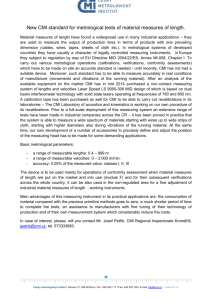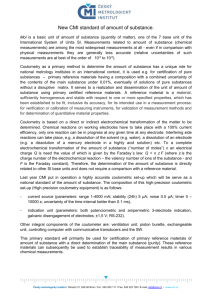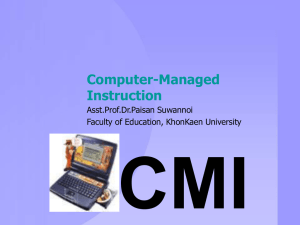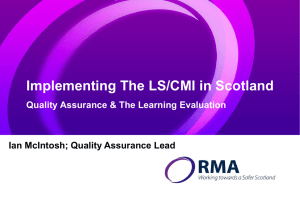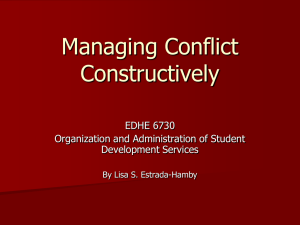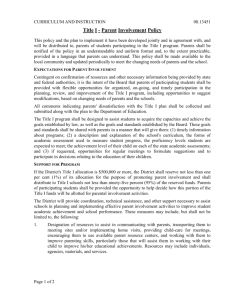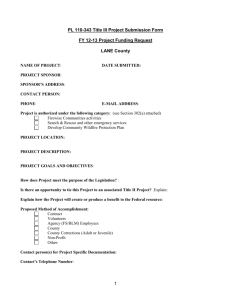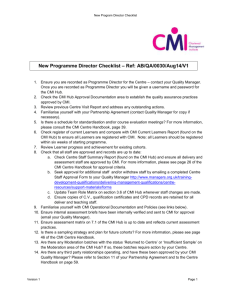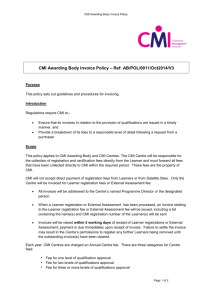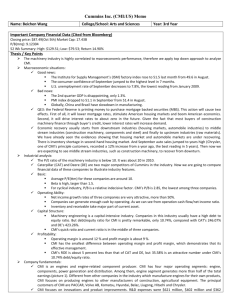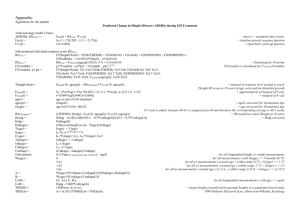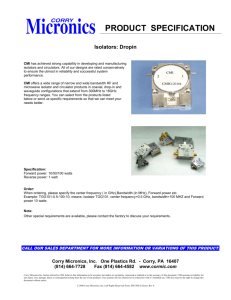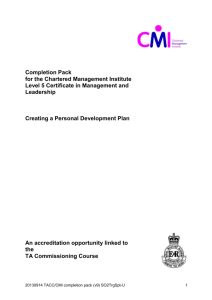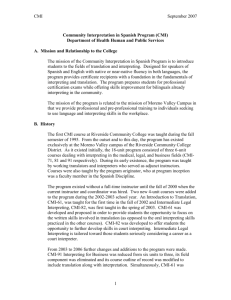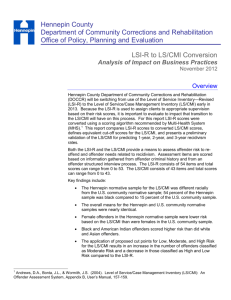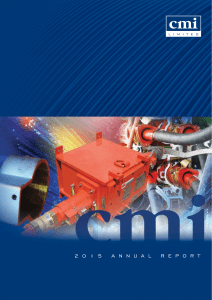Bilateral comparison of mass
advertisement
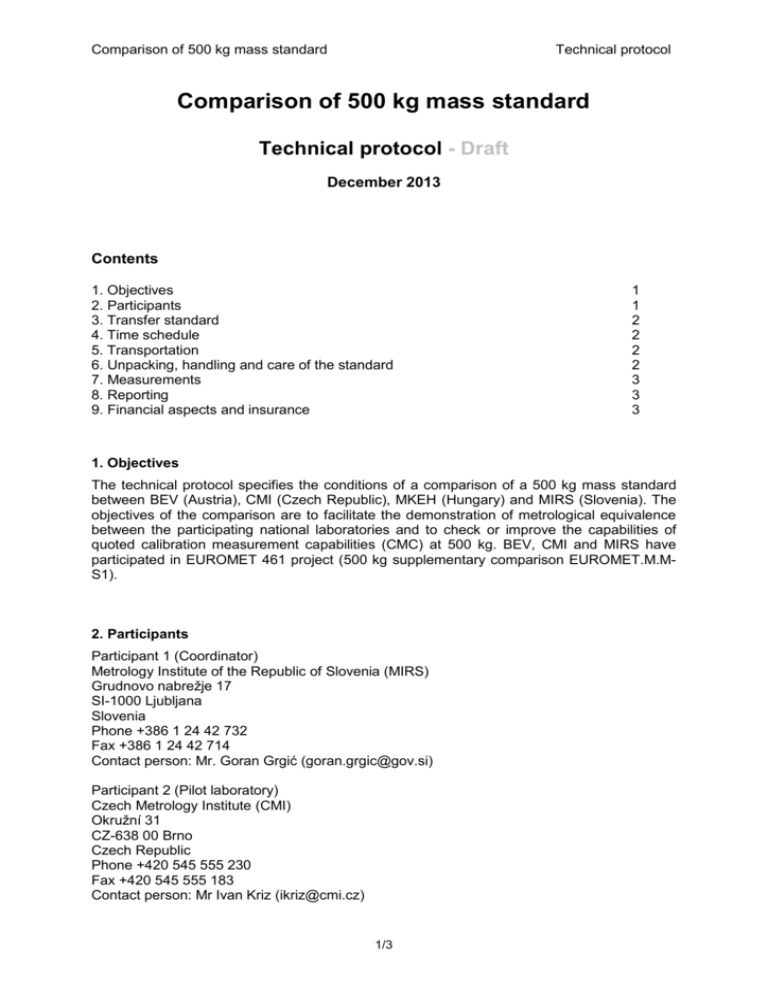
Comparison of 500 kg mass standard Technical protocol Comparison of 500 kg mass standard Technical protocol - Draft December 2013 Contents 1. Objectives 2. Participants 3. Transfer standard 4. Time schedule 5. Transportation 6. Unpacking, handling and care of the standard 7. Measurements 8. Reporting 9. Financial aspects and insurance 1 1 2 2 2 2 3 3 3 1. Objectives The technical protocol specifies the conditions of a comparison of a 500 kg mass standard between BEV (Austria), CMI (Czech Republic), MKEH (Hungary) and MIRS (Slovenia). The objectives of the comparison are to facilitate the demonstration of metrological equivalence between the participating national laboratories and to check or improve the capabilities of quoted calibration measurement capabilities (CMC) at 500 kg. BEV, CMI and MIRS have participated in EUROMET 461 project (500 kg supplementary comparison EUROMET.M.MS1). 2. Participants Participant 1 (Coordinator) Metrology Institute of the Republic of Slovenia (MIRS) Grudnovo nabrežje 17 SI-1000 Ljubljana Slovenia Phone +386 1 24 42 732 Fax +386 1 24 42 714 Contact person: Mr. Goran Grgić (goran.grgic@gov.si) Participant 2 (Pilot laboratory) Czech Metrology Institute (CMI) Okružní 31 CZ-638 00 Brno Czech Republic Phone +420 545 555 230 Fax +420 545 555 183 Contact person: Mr Ivan Kriz (ikriz@cmi.cz) 1/3 Comparison of 500 kg mass standard Technical protocol Participant 3 Bundesamt für Eich- und Vermessungswesen (BEV) Arltgasse 35 AT-1160 Wien Austria Phone +43 1 21110-6607 Fax +43 1 21110-6000 Contact person: Mr. Zoltan Zelenka (zoltan.zelenka@bev.gv.at) Participant 4 Hungarian Trade Licensing Office (MKEH) Németvölgyi út 37-39 HU-1124 Budapest XII. Hungary Phone +36 1 458 59 47 Fax +36 1 458 59 27 Contact person: Mrs. Csilla Vámossy (vamossycs@mkeh.hu) 3. Transfer standard The transfer standard for the comparison is stainless steel cylindrical weight with nominal mass 500 kg provided by CMI. The density of the standard is 7950 kg/m3, associated uncertainty (k=2) is 140 kg/m3. 4. Time schedule Preliminary time schedule: Measurements at CMI: Transport to BEV Measurements at BEV: Transport to MIRS Measurements at MIRS: Transport to MKEH Measurements at MKEH: Transport to CMI Measurements at CMI: Draft report expected: January 2014 February 2014 March 2014 April 2014 May 2014 August 2014 5. Transportation The travelling standard should be transported personally or by courier between the participating laboratories. The transfer standard is housed in a metal container on a wooden pallet. It is the responsibility of the participating laboratories to organize the transport to the next participant. No special custom procedures are required between participating countries. 6. Unpacking, handling and care of the standard When the standard arrives at the participating laboratory, the transportation container and its contents should be checked for damage. A visual inspection of the surfaces of the standard should be made and the results noted on the measurement report. The pilot laboratory 2/3 Comparison of 500 kg mass standard Technical protocol should be informed about the arrival and departure time and about the result of the visual inspection as soon as possible by email. Every incident during handling of the transfer standard, where the standard may have been polluted or damaged, should be documented and communicated to the pilot laboratory as soon as possible. Also, the pilot laboratory should be informed about any delay or required change of the time schedule. The standard should be stored at a place where it is protected from dust, aerosols and vapours all the time they are not in the balance, for example in their travelling containers or in a suitable clean environment protected from dust, drafts and vapour. If the weight is placed on a table, the table surface should be clean and covered by acid free tissue paper. The transfer standard should be handled carefully and only ever with the appropriate tools. When being manipulated the weight should be handled by the lifting ring. The standard should never be touched with bare hands. 7. Measurements The participating laboratories shall determine the conventional mass of the standard according their normal calibration procedure. An appropriate time should be allowed for the stabilisation of the weight following transportation. For the buoyancy correction, the air density should be determined using the laboratory’s standard procedure. 8. Reporting A completed measurement report (the form "Measurement report.doc") for the measurement results, data of the ambient conditions, instruments used and traceability of the participant's reference standards must be submitted to the pilot laboratory within two weeks after the completion of the measurements. The pilot laboratory will make the data analysis. CMI will provide the link to EURAMET.M.M-S1. First draft of the comparison report will be provided within six weeks after the receipt of the results for the data analysis. 9. Financial aspects and insurance Each participating laboratories is responsible for its own costs of measurements, transportation and travel insurance as well as any damage that may occur within its country. The transfer standard shall be insured when courier company is used for transportation to the next participating laboratory. 3/3
